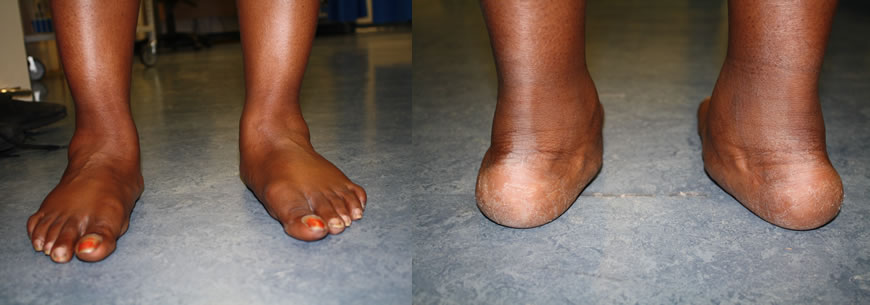in Foot and Ankle Surgery and Reconstruction
When you stand, most people have a “space” under the arch or instep of the foot, however the depth of space under the arch can be variable. You may notice in young children that their feet often look a little flat, this is usually totally normal as the arch tends to develop in their feet by of 9 or 10 years old.
In many people if the flat foot has been present since teenage years it may simply be the way their foot is shaped and entirely normal. In these cases both feet are often the same. There are many “foot specialists” who may tell you that your arches have “fallen”. It is important that any such advice is given to you by a suitably qualified professional who can tell what is normal from abnormal. Having a longstanding flat foot can be ok.
If only one foot is affected it may be abnormal. If your foot is painful and you think it is flat then it is possible you have something causing the flat foot. People often complain of this discomfort on exercise. If your foot shape changes over time (months) i.e. if you had normal arches and then the foot flattens then there is likely an abnormality. Rarely, from childhood you may have had quite a stiff foot, which as you develop into adulthood can become increasingly painful. This could be an abnormally flat foot.
People may find walking painful especially along the inside border of the foot and ankle. Running can be very difficult due to pain. They can also get swelling in the inside of the ankle. Sometimes tingling or numbness can develop on the inside or sole of the foot because the nerve along the inside of the ankle may be slightly stretched or compressed.
The diagnosis is based on an accurate history or story of symptoms from the patient. Examining the foot for pain and swelling can differentiate a normal and abnormal flat foot. X-Rays can display the overall shape of the flat foot. They can also diagnose arthritis as a feature of the flat foot. An MRI scan is useful to determine whether the tendon is working normally and also if there are any abnormal bony fusions.

Unfortunately yes it can. If the cause is a simple tendon abnormality causing the foot to flatten then it can be helped with insoles and physio as the arch can be restored fairly easily. If the foot is left untreated then the foot can become arthritic and the flat foot can be quite stiff and impossible to correct with insoles. It is vital to get assessed as soon as possible as solutions to your problem can change a lot and become more difficult over time.
If the foot is flat but flexible then you may be able to have treatment with simple insoles and physiotherapy. The idea is to support your foot to stop it getting worse but unfortunately the arch would be permanently flat without the insoles. For a more active person this treatment may not be satisfactory. In this case surgery to re-create the arch can be performed, a flat foot correction.
If the foot becomes very stiff and the arch is flat and rigid the foot can become quite painful. This can be as a result of arthritis in the foot. You can then wear specially made shoes to fit your foot but not change the shape of your foot. If this is not suitable then surgery to stiffen the back of the foot formally, by performing a hindfoot fusion can be done. This is a good operation to eliminate the horrible pain in the foot.
Many patients are simply seeking advice on managing a problem. If you have an abnormal flat foot it will never be made “a normal shape in a normal shoe” without surgery. You can manage it with special insoles and physiotherapy but it can still get worse. Specially made shoes can be an attractive option, if your lifestyle is less active than others. Surgery is successful in over 80% of patients and worth discussing with your surgeon.